The Charles Archive: Old Buildings in a New Town
- 19th September 2018
This is the twelfth in a series of blog posts celebrating the life and work of timber-frame building specialists F.W.B ‘Freddie’ and Mary Charles. Funded by Historic England, the ‘Charles Archive’ project aims to digitise and make more accessible the Charles Archive collection.
This blog explores a survey, undertaken by Freddie Charles, as part of the planning of Redditch New Town. Commissioned by Brian Bunch, Chief Architect and Planning Officer for the Redditch Development Corporation, Freddie’s Survey of Historic Buildings in Redditch New Town Eastern Area is dated 13th March, 1969.
The first wave of New Towns were planned under the powers of the New Towns Act 1946, as a means of relocating populations in poor or bombed out housing, following the Second World War. Redditch was part of a second wave of New Towns in the 1960s, aimed at alleviating housing shortfalls near large urban centres such as Birmingham and Liverpool. Designated on 11th April 1964 the New Town of Redditch was removed temporarily from Local Authority control and placed under the supervision of The Redditch Development Corporation.
As part of planning the Redditch Development Corporation commissioned surveys by a range of specialists. Archaeological earthworks were recorded, important sites excavated and historic buildings surveyed. This work was used to inform development and much of the New Town was, as a consequence, designed around the existing landscape. Many archaeological features, field boundaries, veteran trees and historic buildings were retained.
Freddie’s Survey of Historic Buildings in Redditch New Town Eastern Area was a follow-up to the Corporation’s own survey of Buildings of Special Interest, east of the River Arrow which aimed to list all buildings in the area giving name and type, approximate date, condition and a location number. Freddie notes that development, in-particular the roads, was already in progress at the time of the original survey.
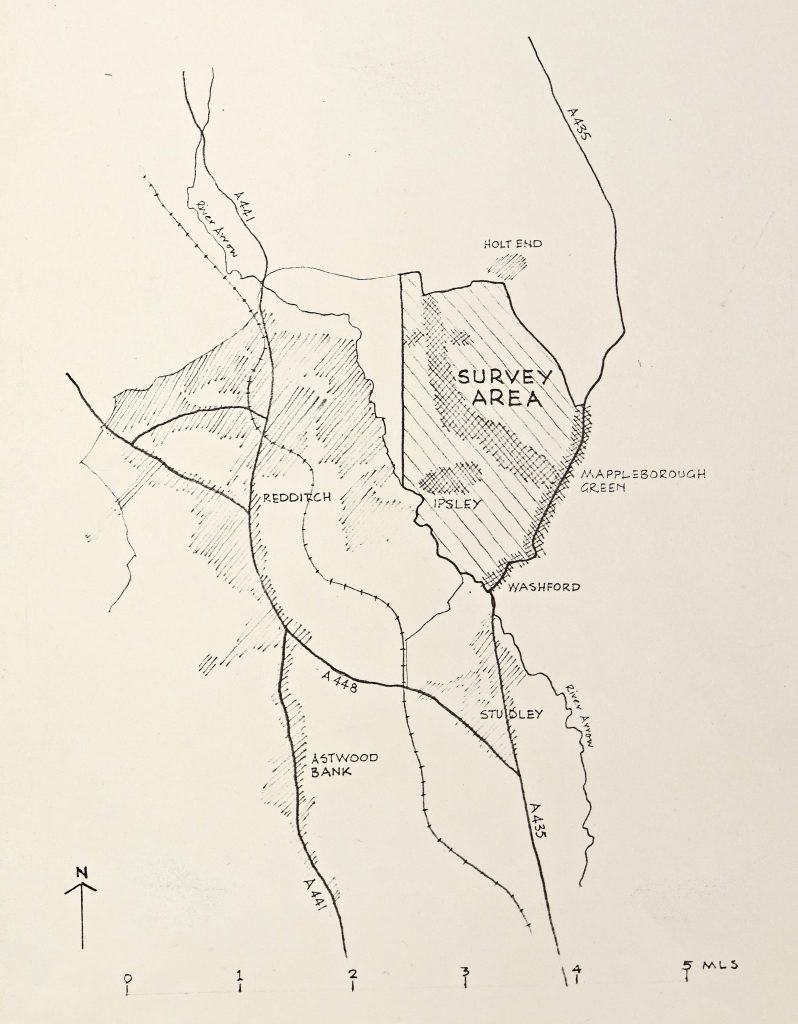
Map of the Survey Area. Digitised image © Worcestershire Archive and Archaeology Service, ref: CA_BA12857_12-1_01 (cropped)
Freddie’s survey incorporates the reports and sketches of the following sixteen buildings/groups of buildings (out of sixty properties on the Buildings of Special Interest list) he interprets as being of ‘historical-architectural quality’. An additional building – Alders Farm – was reported on separately.
- Stanley Farm, Ipsley Mill
- Ipsley Court
- Ipsley Rectory
- Icknield Cottage
- Cottage Farm
- Field Farm
- Marlsfield Farm
- Battens Farm
- Winyates Farm
- Ash Mount (Elm Cottage)
- The Meadows
- Breaches Farm
- High House Farm
- Lower House Farm
- Homestead (Housestead)
- Claybrook Farm
- Alders Farm (reported separately)
Freddie maintains that despite varying in ‘date, character, structure, scale and condition’ most buildings surveyed could claim on different grounds as much justification for preservation as the others. He also regrettably notes that two farmhouses and their steadings have already been demolished and argues that, although all buildings mentioned ‘should be preserved’, if preservation proves impracticable ‘no demolition of any part of them should be decided on without further scrutiny both of the buildings so threatened and of all possibilities of preservation’. As well as development neglect and decay are also noted as immediate concerns.
The following extracts examine three of the sixteen buildings/groups of buildings in more detail. The first, Battens Farm, has been demolished. The second and third, Breaches Farm and Stanley Farm (Ipsley Mill) preserved or partially preserved. Stanley Farm (Ipsley Mill), now Old Mill House and Mill Farmhouse was awarded Grade II listed status in 1975.
Battens Farm (No. 6).
A timber framed building of c. 1600 with a 4-bay timber barn of the same period. The house lies end on to the road, the barn just to the north of it flanking the road. The house consists of three bays and rear wing (north). The middle bay of the main range still has its original chimney stack and diagonal brick shafts placed axially on the north wall. Practically the whole of the exterior is now rough cast, but there is no doubt that practically all the original timber frame still survives. Preservation of both of these buildings is important and, being entirely unprotected by trees or topology, depends very much upon the sympathetic design of the new surroundings. It is still a healthy farm so that nothing should be done to disturb it before disturbance is necessary.
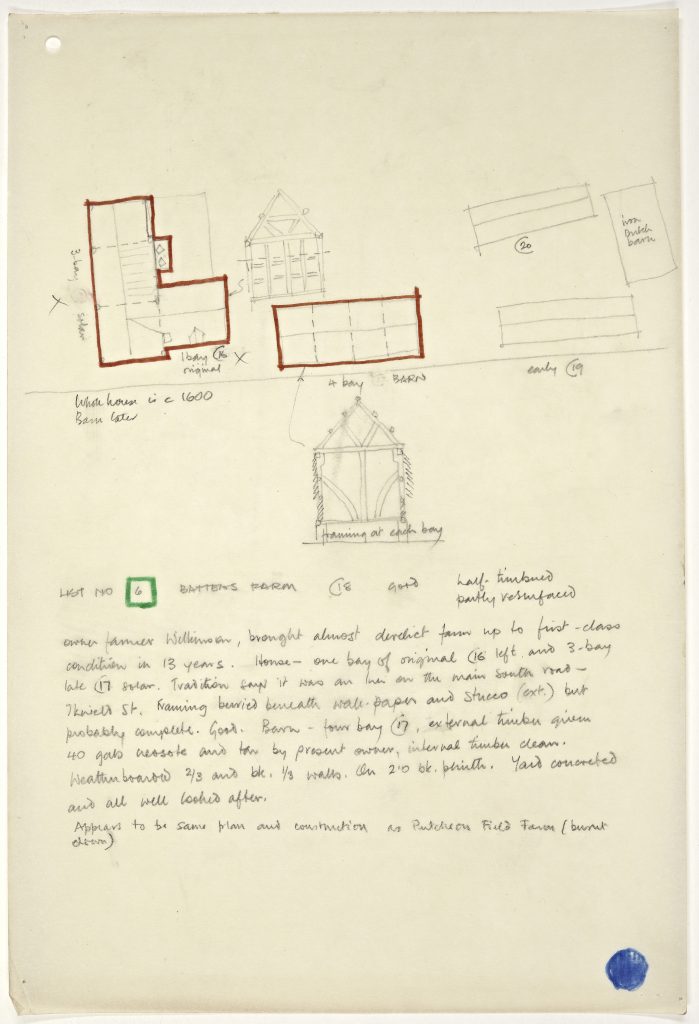
Battens Farm. Digitised image © Worcestershire Archive and Archaeology Service, ref: CA_BA12857_12-1_0
Breaches Farm (No. 29)
This Regency house is now empty and will soon be in bad condition. It is architecturally attractive and it should be worth spending some money in its restoration. The barn close-by to the south west, is timber-framed but in poor condition. The little 3-bay 19th century open-ended shelter would be worth preserving but is, I understand, directly in the line of the proposed road. It could have been a perfect ‘bus shelter’.
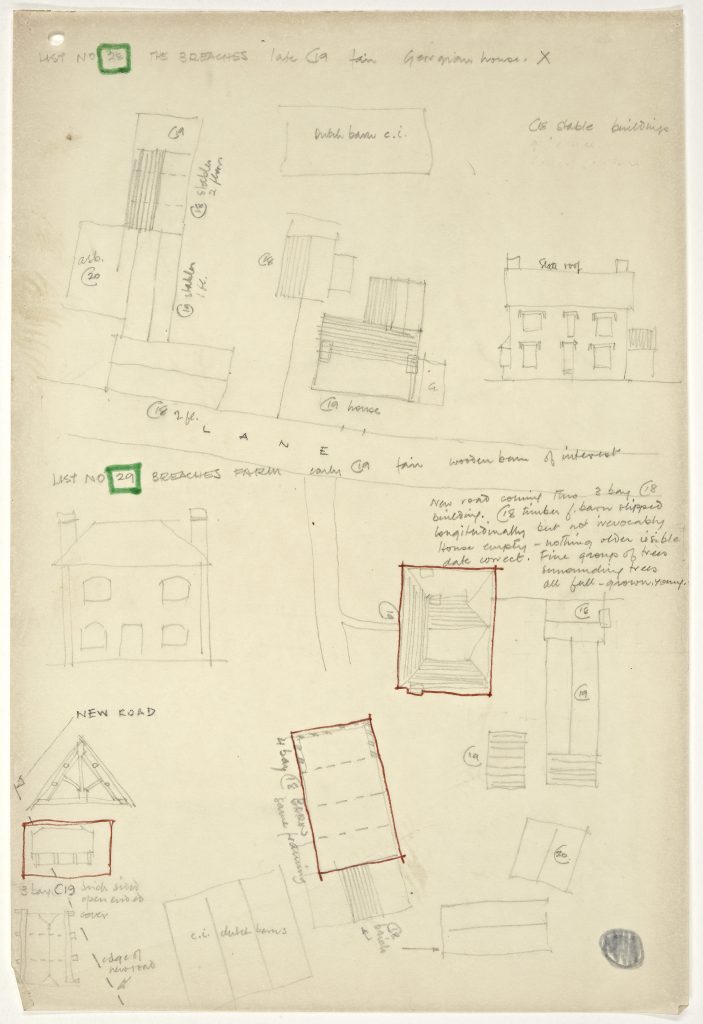
Breaches Farm. Digitised image © Worcestershire Archive and Archaeology Service, ref: CA_BA12857_12-1_17
Stanley Farm, Ipsley Mill (No. 45)
This is a fairly large timber-framed building consisting of a crosswing and two bays representing the hall part of a typical late-16th century farmhouse. It is a valuable building in its own right and forms part of a group which once contained Ipsley Mill, demolished a few years ago. The Mill House (No. 44) and the brick out building to the west of the farmhouse are as important to this group as the large yew tree shielding the out-building from the existing road. The surroundings have seriously degenerated and the bungalow (No. 40), lying a little further to the south, contribute nothing architecturally. Still less does the car dump. Apart from getting rid of this and safeguarding the scenic quality of the group no further action is called for.
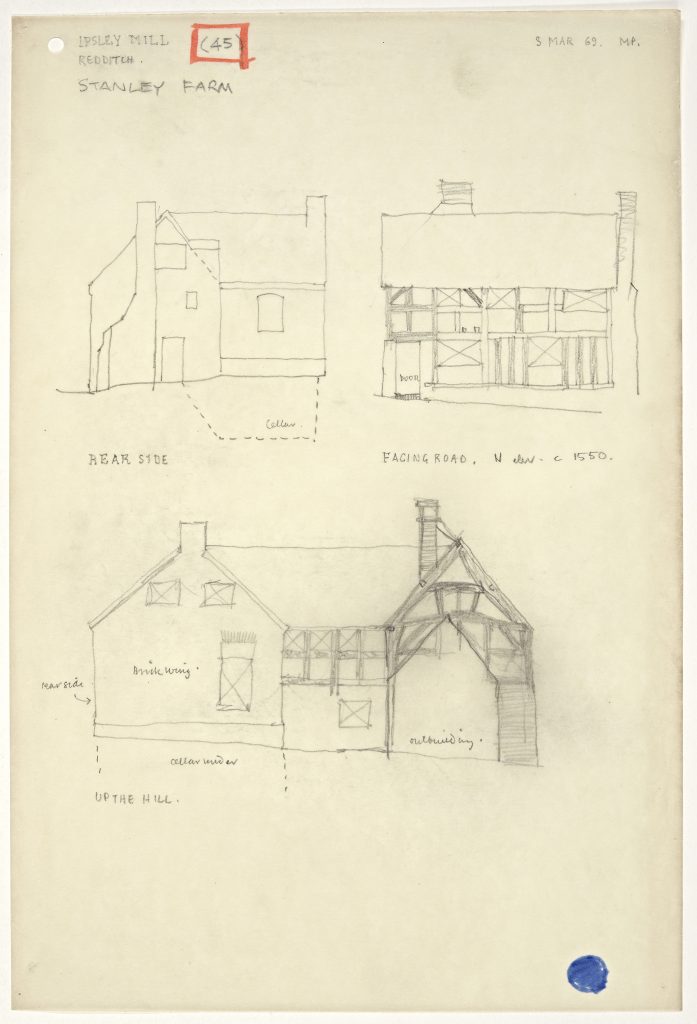
Stanley Farm (Ipsley Mill). Digitised image © Worcestershire Archive and Archaeology Service, ref: CA_BA12857_12-1_12
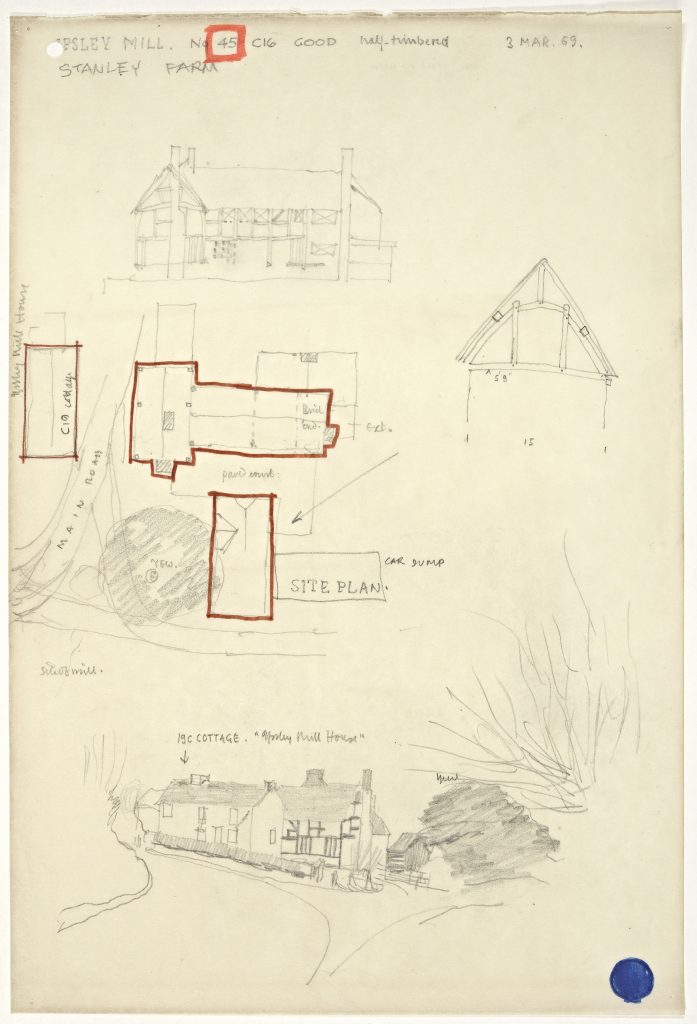
Stanley Farm (Ipsley Mill). Digitised image © Worcestershire Archive and Archaeology Service, ref: CA_BA12857_12-1_13
Post a Comment